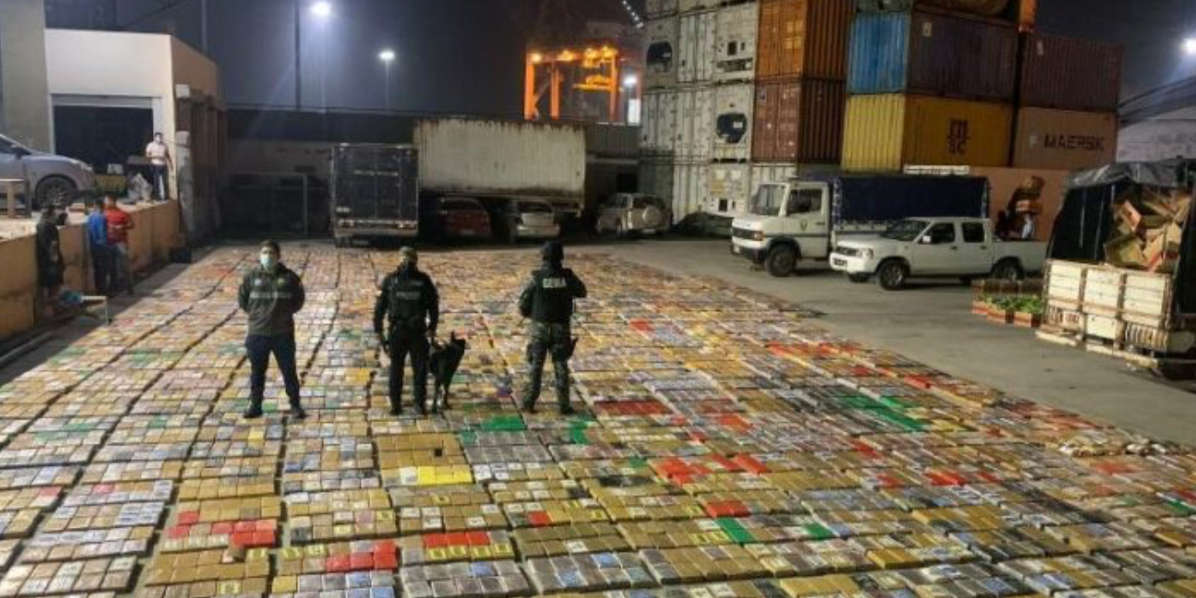In the picture
Six tons of cocaine seized in Guayaquil in February 2022, destined for Belgium [National Police of Ecuador].
report AMERICAN REGIONAL SECURITY, SRA 2023 /PDF version of article
° In 2022, Ecuador doubled its homicide rate for the second consecutive year, becoming the fourth most violent country in Latin America.
° After the agreement peace agreement in Colombia, the drug mafia began to invade the north of Ecuador; in a short time it has moved towards Guayaquil, crossing the entire country.
° As the transit country with the largest seizures, it has had to resort massively to "encapsulation" to dilute the cocaine powder in concrete blocks.
Located among the main coca-producing countries, Ecuador has been consolidating in recent years as a drug transit territory and distribution hub, which has led to an exponential increase in violence and is also pushing emigration abroad.
The year 2022 has marked a clear worsening of the status, with a record number of homicides and cocaine seizures and with the conversion of Guayaquil, which had traditionally been the economic engine of the country, into the point where the drug routes from Colombia and Peru converge for the exit of the merchandise to the United States and Europe.
Meanwhile, political instability, with a president subject to a possible impeachment process, worsens the country's prospects. The economic data are not worrying for the moment, but the political division may end up complicating national finances. A deterioration of economic, political and institutional life can easily fuel the penetration of drug mafias among the ruling class .
In early April 2003, President Guillermo Lasso decreed a state of emergency in several areas of the country, including area in Guayaquil, Ecuador's main port, and authorized the possession and carrying of weapons for defense staff. In 2022 Ecuador doubled its homicide rate for the second consecutive year issue : if in 2020 it ranked 18th in terms of violence among Latin American countries, with a rate of 7.7 homicides per 100,000 inhabitants, in 2022 it was the fourth country, with a rate of 25.9, only behind Venezuela, Honduras and Colombia, but ahead of Mexico, which had a rate of 25.2.
Spill from Colombia
The status has deteriorated very rapidly, mainly as a consequence of the realignment of drug mafias in Colombia. After the 2016 peace agreement , FARC dissidents and other organized crime groups concentrated their activity in southwestern Colombia (especially in the Departments of Nariño and Putumayo, which border Ecuador), using as an exit point for drugs above all the port of Tumaco, a few kilometers from the border.
Soon a significant part of the drug trafficking and the violence that goes with it spilled over into the neighboring country: the routes then also sought the Ecuadorian port of Esmeraldas, and when the Issue of drug shipments increased even more, the main outlet for cocaine became Guayaquil, whose large maritime trade facilitates illegal shipments to the United States and Europe. As it crosses Ecuador from north to south, drug transit has boosted corruption, gang confrontation - on the streets and in prisons - and homicides.
In February, a large cocaine hydrochloride processing plant was located 15 kilometers from the Colombian border. laboratory In February, a large cocaine hydrochloride processing plant was located 15 kilometers from the Colombian border, with a production capacity of two tons per month, so that Ecuador is no longer just a transit country, but is entering the production chain from the coca paste that arrives from Colombia.


